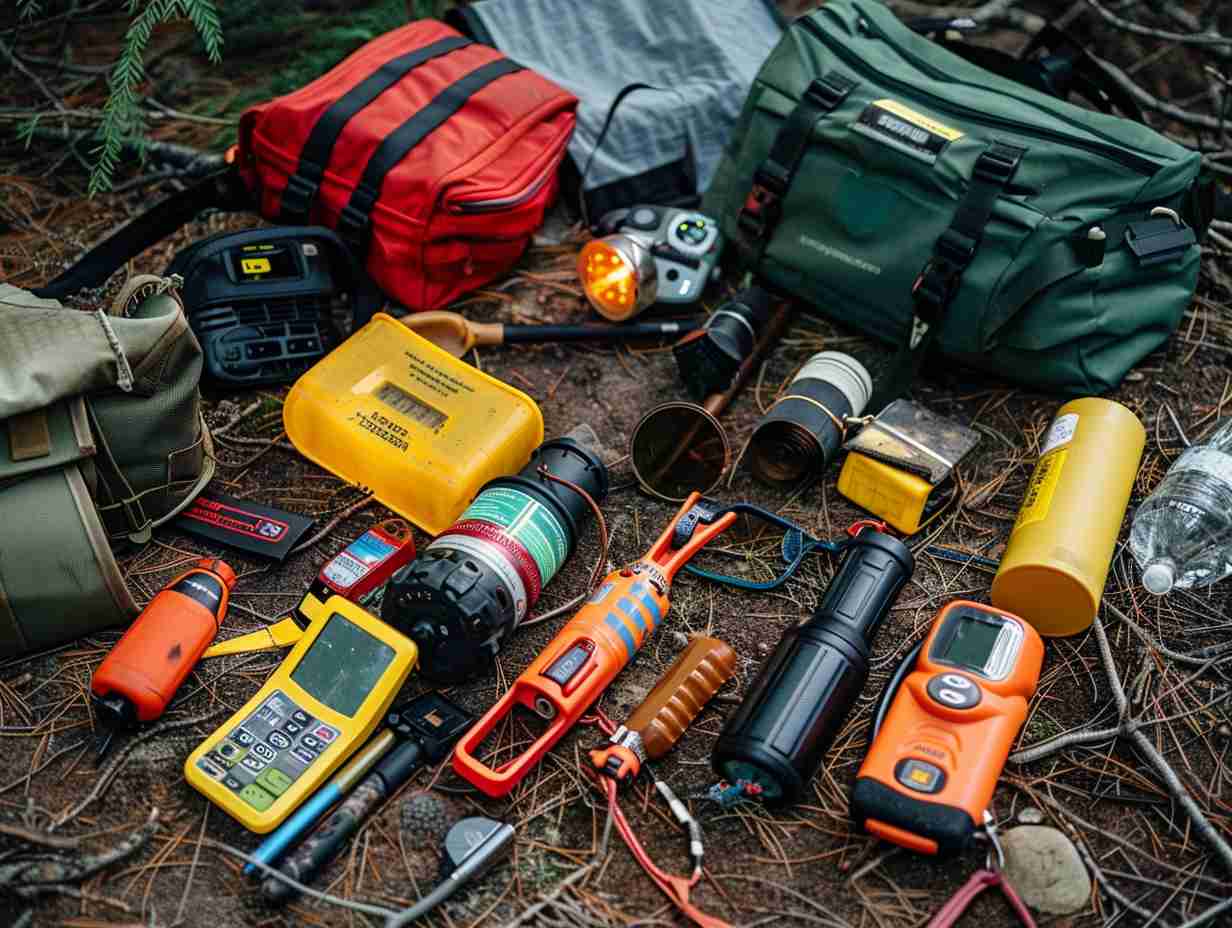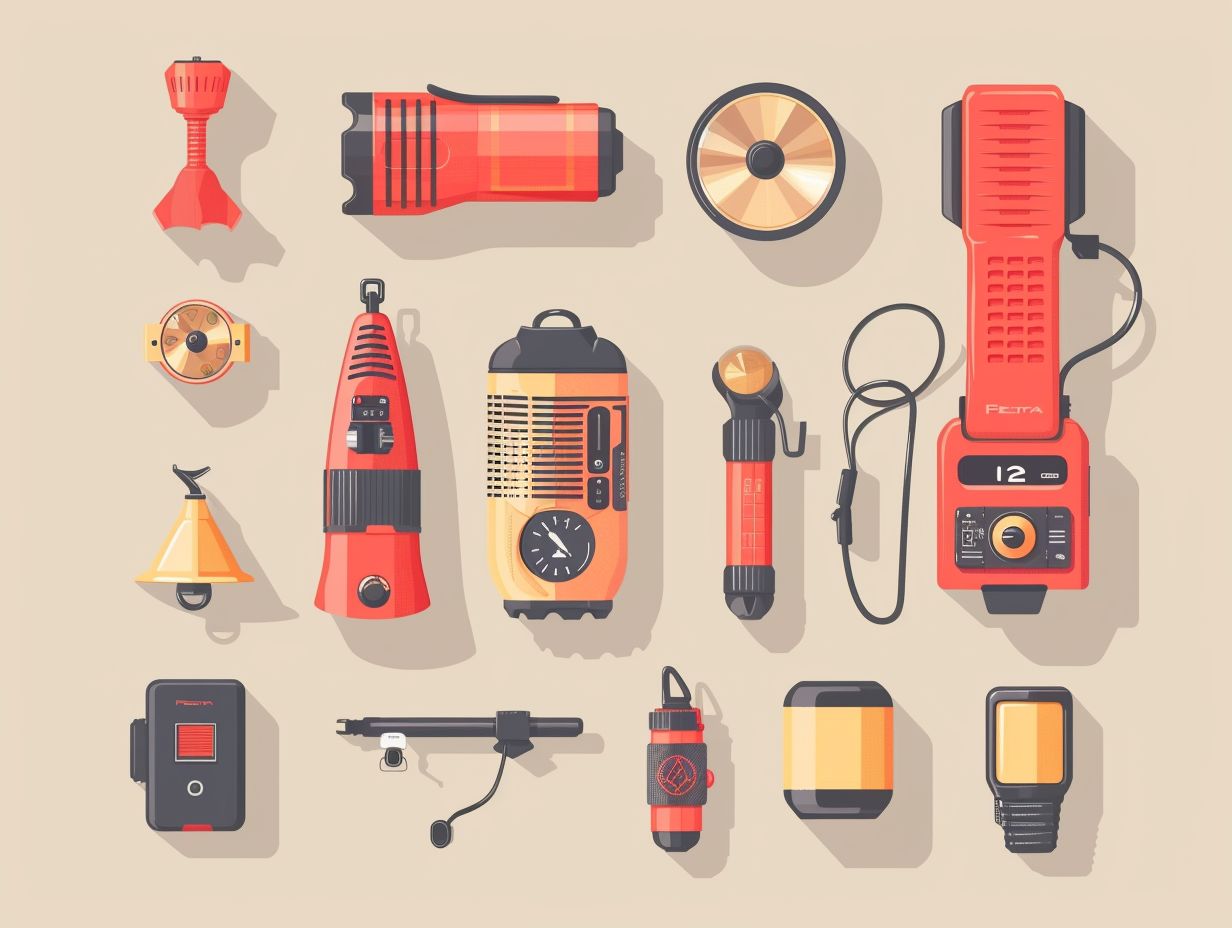
Emergency Signaling and Communication Devices

Have you ever found yourself unexpectedly off the beaten path, pondering the importance of having a reliable emergency signaling and communication device? Imagine a situation where swift rescue or assistance is vital, and the right device can make all the difference. From whistles to GPS beacons, each tool serves a unique purpose in ensuring your safety during critical moments. Understanding the features and options available can be a game-changer when faced with an emergency. So, how can you make sure you have the best tool at your disposal when every second counts?
Key Takeaways
- Signaling devices like whistles, mirrors, smoke signals, strobe lights, flags, and dye markers are essential in emergencies.
- GPS beacons offer precise location tracking, long battery life, durability, and some models provide two-way messaging.
- Signal flares are high-visibility, easy to use, effective in low light, but have limited use and weather dependencies.
- Communication devices include cell phones, two-way radios, personal locator beacons, satellite messengers, and emergency radios.
- Consider battery life, range, and durability when choosing an emergency communication device.
Importance of Emergency Signaling Devices
Emergency signaling devices play an essential role in alerting others during potentially life-threatening situations. Whether you’re lost in the wilderness, stranded at sea, or facing an emergency in any remote location, these devices can be your lifeline.
By activating a signaling device, such as a whistle, mirror, or flare, you can quickly attract attention and communicate distress. This immediate alert can mean the difference between swift rescue and prolonged isolation.
In critical situations where every second counts, having the right signaling device can be the key to ensuring your safety and survival. Hence, understanding the importance of these tools and having them readily accessible can be crucial for anyone venturing into the outdoors.
Types of Signaling Devices

When considering signaling devices for outdoor activities, it’s important to understand the various types available and their specific functions. Some common types include whistles, signal mirrors, and smoke signals. Whistles are compact and emit loud sounds for short distances.
Signal mirrors use reflected sunlight to attract attention over long distances. Smoke signals create visible smoke clouds to signal for help. Additionally, strobe lights are effective at night, while flags and dye markers work well in daylight.
Each type serves a unique purpose, so it’s vital to choose the right signaling device based on your specific needs and the environment you’ll be in. Familiarize yourself with how each device operates before heading out on your outdoor adventure.
Features of GPS Beacons
Exploring the features of GPS beacons can greatly enhance your outdoor safety and navigation experience. These devices are equipped with a built-in GPS receiver that allows you to broadcast your precise location in case of an emergency. GPS beacons typically have a long battery life, providing you with extended usage during your outdoor adventures. They’re designed to be rugged and durable, guaranteeing they can withstand harsh weather conditions.
Many GPS beacons also come with additional features like two-way messaging, allowing you to communicate with emergency services or your contacts. Some models even offer tracking capabilities, enabling your loved ones to monitor your location in real-time. When choosing a GPS beacon, consider these features to make sure you stay safe during your outdoor activities.
Pros and Cons of Signal Flares

Signal flares serve as valuable tools for enhancing visibility and signaling in various outdoor scenarios. They can be essential for attracting attention during emergencies, such as when lost in the wilderness or needing rescue at sea. However, signal flares also come with limitations that should be considered. Here is a brief overview of the pros and cons of signal flares:
| Pros | Cons |
|---|---|
| High visibility from a distance | Limited number of uses |
| Effective in low light conditions | Potential fire hazard |
| Easy to use and deploy | Short duration of signal |
| Can be seen from air or land | Weather conditions may affect visibility |
Communication Devices for Emergencies
Considering the significance of staying connected during emergencies, having reliable communication devices is essential for ensuring safety and prompt assistance.
Cell phones are the most common and versatile communication tool; they allow you to make calls, send messages, and access emergency services.
Two-way radios are another reliable option, especially in areas with poor cell reception.
Personal locator beacons (PLBs) and satellite messengers can send distress signals and your location to emergency responders, even in remote locations.
Emergency radios with NOAA weather alerts can keep you informed about changing conditions.
When choosing a communication device, consider factors like battery life, range, and durability.
Being prepared with the right communication device can make a significant difference in emergency situations.
Choosing the Right Device for You

When selecting a communication device, prioritize features that align with your specific needs and circumstances. Take into account factors like portability, battery life, range, and ease of use to make sure you choose the right device for your situation.
Here are some key points to take into consideration:
- Portability: Opt for a device that’s lightweight and easy to carry with you.
- Battery Life: Choose a device with long battery life or one that’s rechargeable for extended use.
- Range: Consider the communication range the device offers based on where you’ll be using it.
- Ease of Use: Select a device with simple controls and clear instructions for quick and efficient communication during emergencies.
Frequently Asked Questions
Can Emergency Signaling Devices Work in Extreme Weather Conditions?
In extreme weather conditions, it’s essential for emergency signaling devices to function reliably. Factors like durability, water resistance, and battery life play a key role in ensuring that these devices can perform effectively when needed most.
Are GPS Beacons Compatible With All Types of Smartphones?
Yes, GPS beacons are compatible with most smartphones. They use Bluetooth technology to connect seamlessly. Confirm your phone has the necessary apps and features. Check for compatibility before relying on them for navigation or communication in remote areas.
How Long Do Signal Flares Typically Last When Activated?
When signal flares ignite, they illuminate the sky like a fiery comet. Lasting approximately 1-2 minutes, these beacons of light provide a brief yet intense signal. Remember, in emergencies, every second counts. Stay prepared.
Can Communication Devices for Emergencies Function Without a Cellular Network?
Yes, communication devices for emergencies can function without a cellular network. Many devices operate through satellite communication or radio frequencies. These alternative methods guarantee that you can send distress signals and communicate even in remote areas without cell service.
Are There Any Specific Regulations for Using Emergency Signaling Devices in Certain Areas?
In certain areas, regulations govern the use of emergency signaling devices. It’s important to stay informed about specific rules and guidelines to guarantee your safety and compliance with local laws when utilizing these devices.
Conclusion
So there you have it, folks! When it comes to emergency situations, having the right signaling and communication devices can mean the difference between life and death.
Whether you prefer the traditional whistle or the high-tech GPS beacon, make sure to choose wisely and be prepared for anything.
Remember, in a pinch, it’s better to have it and not need it, than to need it and not have it.
Stay safe out there!
Disclaimer: Some information is provided through AI. Users should always conduct their own research and consult with qualified professionals before making any decisions.Affiliate information declaration: We may earn revenue from the products referred on this page and participate in affiliate programs.


